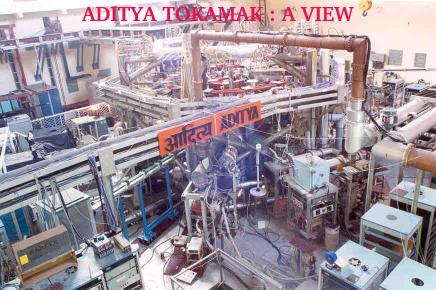During 1995-96, while trying to run ADITYA Tokamak (Nuclear Fusion Reactor), we used to find that nearly 80% of the discharges fail to go through. This was due to the fact that power supply control system used to stop the discharge due to some malfunctions. ADITYA power supply system was controlled by a PDP-11 computer. It was popularly believed that software in the computer has some problems due to which the control system was malfunctioning. This was frustrating as lot of effort went into running the machine but there was very little output.
was due to the fact that power supply control system used to stop the discharge due to some malfunctions. ADITYA power supply system was controlled by a PDP-11 computer. It was popularly believed that software in the computer has some problems due to which the control system was malfunctioning. This was frustrating as lot of effort went into running the machine but there was very little output.
Once one of the power supply engineers told me that the grounding system in the main hall was not being maintained properly. I enquired about how the grounding system were being maintained. I was told that everyday in the morning helpers go and pour water in the pit having perforated copper pipes going 3 meters into ground.The way grounding system was designed, it was a mesh of copper strips running throughout the floor. And at multiple points perforated pipes were embedded in the ground and they were coming to small openings in the floor(called pits) through which water could be poured in. I went and observed how helpers were pouring water in the perforated pipes. I found that water was being poured outside the pipes into little reservoirs (called pit) but none of the water was flowing inside the pipe. I further enquired as to how the water goes inside the pipe and there was no clear answer. On further discussion, I was informed that the perforated pipes inside have all corroded and they are not serving the purpose of grounding appropriately and it would be impossible now to replace all the pipes as they were all embedded in the floor. Due to lack of proper grounding there used to be lot of noise in the power supply system, which would vary day by day.
One day I took a flashlight and used the light to see inside one of the perforated pipes. I found that almost till the top 6 inch of the pipe there was very hard mud. Due to this it was not possible to see inside the perforated pipes and also it was not possible for water to go in and improve the contact of pipes with the ground.
I wanted to clean up the hard mud inside the perforated pipes to see whether the pipes had corroded and also to make sure that water can go all the way down. It was not possible to bring any heavy machinery inside ADITYA main hall due to lack of access. In my village I had noticed how they used to carry out boring of hand pumps without any heavy machinery. So the only way I could carry this task out was to depend on traditional knowledge from rural area of boring hand pump. I requested my staff to find such a plumber. They found one and we requested him to try to see if we can clean one of the perforated pipes. We also promised to him that if he can clean one of them, we would give him contract to clean all the 30-40 pipes that we had inside the hall. He agreed and tried cleaning one of the pipes. Lot of mud came out and after clearing up the mess, we looked inside the pipe using a light source. We were amazed to see that perforated pipe was shining inside with no signs of corrosion. So the only issue was the mud that had made its way inside and hardened over years.
Now I got all the pipes cleaned and all the copper strip connections cleaned and reconnected. Once this was done and the pipes were filled with water, the grounding system improved. We immediately noticed tremendous improvements in the noise in the power supply system and they were orders of magnitude less now. After this the performance of the power supply control system improved and it became very reliable. The reason of misbehaviour was the noise, which made measurements very error prone and lead to failure of control system. It was surprising to see a very low tech solution to a futuristic technology system!
Lesson from this experience was that in Science, no task is low level task.


The presence of mind to correlate a frugal solution from village setting to apply in a high end technology situation needs is the unique mix of indian brilliance…
And the person needs to know both nuclear science and heart of frugal innovation in rural India. The true hybrid solution of Cutting edge with jugaad. Kudos Sir..
Traditional learning has also scientific base which are many times treated backward. But its fusion needs an open minded person like you. Great insight into problem solving.
Really inspiring and motivating. Observing such traditional concepts and implementing it is the real challenge. Great efforts sir.
Great people come with simple ideas
open eyes and intuitive mind saved the day! Hats off!